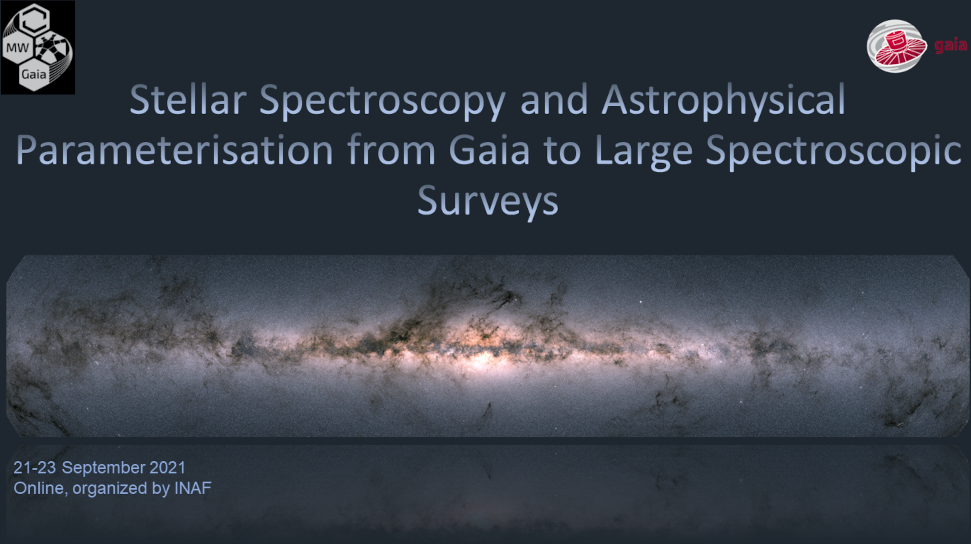The Gaia mission is revolutionizing Galactic astrophysics in many ways and, although this is not generally perceived, Gaia is also a formidable spectroscopy machine. However, the best results are obtained by combining Gaia abilities and ground based high resolution spectroscopy. Advantages and limitations must be understood for a better synergy.
This is a WG2 PhD school of the EU COST action MW-Gaia and will be three full days. The school will discuss the derivation of stellar parameters from spectroscopy and large survey pipelines using classical, high precision and data driven methods.
Tutorial sessions are foreseen. The final lecture will be on publication skills.
Space for participants to present their research is granted, either as poster or oral presentation.
All sessions will be on-line. Registration is free of charge, but participant number will be limited.
Registration is now open.
Dead-line for registration and abstract submission: Sept.5th, 2021
The main subjects and the speakers are:
- large spectroscopic surveys: Angela Bragaglia (INAF-Bologna), Elena Pancino (INAF-Arcetri), Antonella Vallenari (INAF-Padova)
- “classical” spectroscopic analysis (equivalent widths, spectral synthesis, differential spectroscopy): Jorge Melendez (Univ. Sao Paulo), Chris Sneden (Univ. of Texas, Austin), Maria Tsantaki (INAF-Arcetri), Sergi Blanco-Cuaresma (CFA, Harvard)
- data driven methods:advantages and limitations René Andrae (MPIA), Alejandra Recio-Blanco (OCA), Lorenzo Spina (INAF-Padova)
- publication skills: Chris Sneden (Univ. of Texas, Austin)

